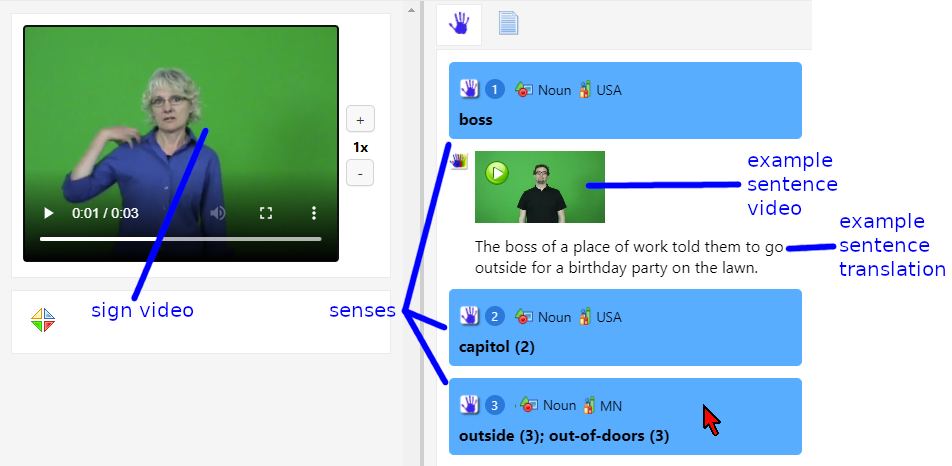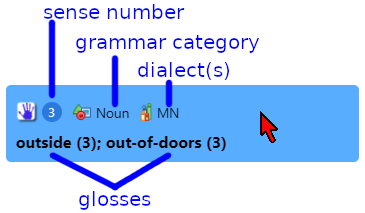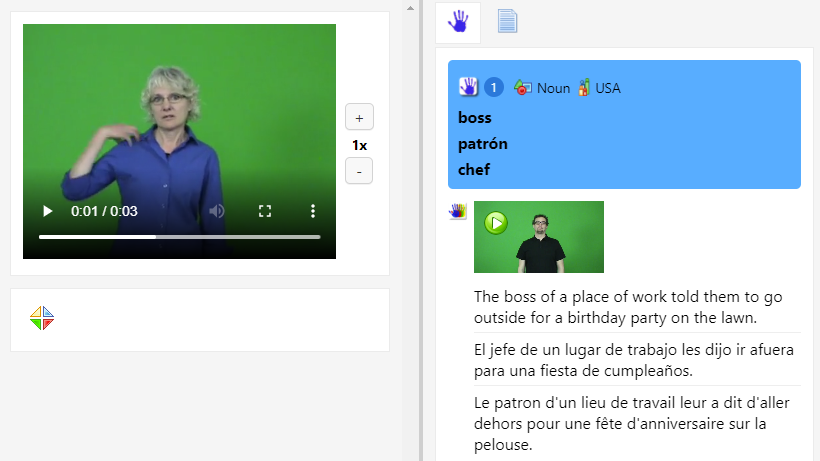A sign can be used in two or more ways, with different meanings. Each separate meaning is called a sense. For example, the ASL sign below can mean three things. It can mean 'boss' or 'capitol' (a 'boss city'). In Minnesota, it can also mean 'outside'.
In SooSL, senses have a blue background.

Here, the senses are to the right of the video. When SooSL Web displays only one or two columns, the senses are under the sign video.
Each sense has a sense number, a grammar category, one or more dialects, and one or more glosses.

Sometimes a word by itself isn't clear as a gloss. For example, the English word "fly" could refer to an insect, to the way a bird or insect moves by flapping its wings, or to the way an airplane moves. So, sometimes there is a clarifying comment in parentheses after a gloss.

Some senses have one or more example sentences under them. An example sentence shows you how to use that sense of the sign. The picture above includes an example sentence for sense number 1. (This picture is from SooSL Web; SooSL Desktop looks a little different.)
Some dictionaries have glosses in more than one written language. You can decide which languages you want to see. Below, you see glosses in English, Spanish, and French. The example sentence also has translations in these three languages.

In SooSL Desktop, you can add and edit senses.
Created with the Personal Edition of HelpNDoc: Transform Your Word Document into a Professional eBook with HelpNDoc